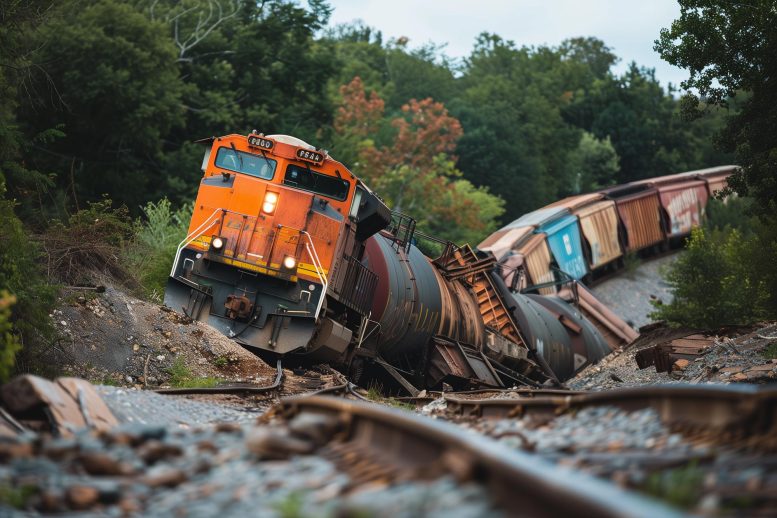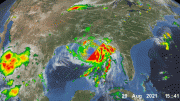
A study in Risk Analysis highlights that increasing freight train length significantly raises the risk of derailments, prompting legislative efforts to regulate train sizes for safety. Credit: SciTechDaily.com
Recent research published in Risk Analysis reveals that longer freight trains have a higher likelihood of derailment. A study showed that trains with 100 cars are over twice as likely to derail as those with 50 cars.
In February 2023, 38 cars from a 151-car, 9,300-foot-long freight train derailed in East Palestine, Ohio, leading to the release of hazardous materials that required the evacuation of more than 2,000 residents. In recent years, such longer and heavier freight trains have become more common, primarily driven by fuel efficiency, cost-savings, and emissions reduction measures in the railroad industry.
Increased Risk With Longer Trains
New research in the journal Risk Analysis has confirmed that longer freight trains bring with them a higher risk of derailment. The study found that a 100-car train is more than twice as likely to experience a derailment than a 50-car train. This means that, if the U.S. rail transport system employed 100-car trains rather than 50-car trains (requiring half as many trains overall), the systemwide risk of derailments would rise by about 11%.
Research and Regulatory Response
The quantitative analysis, used by Peter Madsen of Brigham Young University’s Marriott School of Business, used detailed information on U.S. freight train accidents over a 10-year period (2013-2022) from the Federal Railroad Administration (FRA) Rail Equipment Accident and Highway-Rail Grade Crossing Accident databases. There were about 35,000 reported incidents during this time period in the two databases. (In their analysis, the researchers used a sample of about 3,000 incidents in which a derailment matched up with a highway-rail grade crossing accident that happened around the same time in the same location.)
Derailment is the most common type of serious train accident in the U.S. In response to the disastrous Ohio derailment, U.S. Senator Sherrod Brown introduced the Railway Safety Act which is still being debated. If enacted, it would require the development of regulations regarding freight train length, among other things. Additionally, several U.S. states are currently considering state-level regulations regarding freight train length.
“Understanding derailment risk is an important component for evaluating the overall safety of the rail system and for the future development and regulation of freight rail transportation,” says Madsen. “Given the limitations of the current data on freight train length, this study provides an important step toward such an understanding.”
Reference: “The relationship between freight train length and the risk of derailment” by Peter M. Madsen, Robin L. Dillon, Konstantinos P. Triantis and Joseph A. Bradley, 28 May 2024, Risk Analysis.
DOI: 10.1111/risa.14312









I’m surprised that train length has not been regulated sufficiently already. The effect known as “bowlining” on long train lengths has been familiar to the rail industry for decades.
longer trains, more profit, more money for share holders, more money for lobbyists, more money for politicians – what could possibly go wrong?
What’s the reduction in fuel cost?
If you’re going to reduce emissions you’re going to increase train lengths.